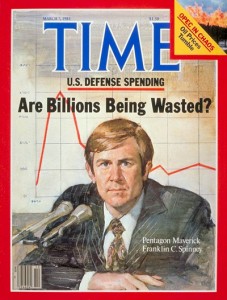
Below is a dynamite op-ed on the cost of the so-called war on terror by Linda Bilmes and Joseph Stiglitz. Without being critical, I think at least two additional aspects to these costs make the picture even worse than they say.
1. Some people in this [let them eat] cake walk became — and are still becoming — filthy rich spending other people's money and spilling other people's blood — the acknowledgement of which takes one into the murky question of what moral values are shaping this political-economic meltdown.
2. While not directly caused by the war on terror, the ramping up of defense expenditures magnified the the rate of distorting spillovers (the Melman* effects) that the MICC's politicization of R&D and manufacturing have on diminishing America's overall commercial manufacturing efficiency and industrial competitiveness. The costs may be incalculable, but that does not make them less real.
* Professor Seymour Melman of Columbia University documented these effects in his voluminous writings, two of his most important books being The Permanent War Economy and Profits Without Production.
Los Angeles Times, September 18, 2011
Fighting the war on terror compromises the economy now and threatens it in the future.
By Linda J. Bilmes and Joseph E. Stiglitz
Ten years into the war on terror, the U.S. has largely succeeded in its attempts to destabilize Al Qaeda and eliminate its leaders. But the cost has been enormous, and our decisions about how to finance it have profoundly damaged the U.S. economy.
Many of these costs were unnecessary. We chose to fight in Iraq and Afghanistan with a small, all-volunteer force, and we supplemented the military presence with a heavy reliance on civilian contractors. These decisions not only placed enormous strain on the troops but dramatically pushed up costs. Recent congressional investigations have shown that roughly 1 of every 4 dollars spent on wartime contracting was wasted or misspent.
Phi Beta Iota: We judge defense to be 75% fraud, waste, and abuse (3 out of 4 dollars, not 1 out of four). The infantry is 4% of the force, suffers 80% of the casualties, and receives 1% of the budget. Our starting position is that 20% of the Pentagon budget can be justified in conference, everything else is on the table for draconian cuts toward a balanced budget. Agriculture, energy, and health are documented at 50% waste–the Pentagon is much less relevant to the society and the economy than those three, ergo we speculate that defense is half again as wasteful as these other core sectors.
See Also:
1961-2011: 50 Years of The Military-Industrial Complex
Bob Gates: Flat Out Liar or Just Feeble? + RECAP
Marcus Aurelius: US at Permanent “War” + War RECAP
Reference: 27 Sep MajGen Robert Scales, USA (Ret), PhD
Review: Grand Theft Pentagon–Tales of Corruption and Profiteering in the War on Terror
Review: The Three Trillion Dollar War–The True Cost of the Iraq Conflict
Search: cost of corruption + Corruption RECAP



